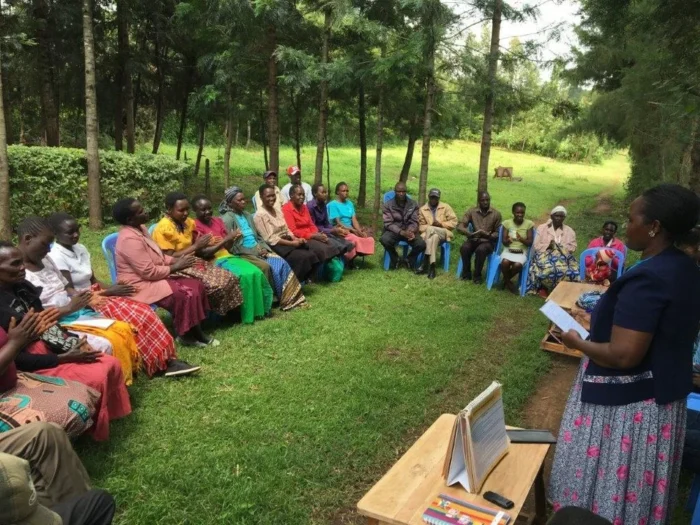What is a Chama Legal Framework?
A Chama legal framework refers to the set of laws and regulations that govern the operation of Chamas, which are informal savings and investment groups popular in Africa. The framework outlines the legal requirements for registration, financial reporting, investment, borrowing, and other activities of Chamas, and aims to protect members from fraud, mismanagement, and other forms of malpractice.
What is a Chama?
In Kenya, chama is a popular term used to describe a group of people who come together for a common purpose, and pool resources often savings and investments. These groups can be formal or informal and can have various structures, such as rotating savings and credit associations (ROSCAs), investment clubs, or cooperative societies.

Chamas are popular in many countries, particularly in Africa, where they are used as a way to mobilize savings and provide financial security for members who may not have access to formal banking services.
Individual members can invest in businesses, real estate, or other assets that would be out of reach by using chamas.
Legal Forms of Chamas
It is possible for chamas to take various legal forms depending on the country and the nature of their activities.

Some of the common legal forms for chamas include:
Rotating Savings and Credit Associations (ROSCAs)
Rotating Savings and Credit Associations are informal Chamas whose operation is on the basis of trust among members.
In ROSCAs, one member receives the entire pool of funds in each cycle, and members contribute a fixed amount of money regularly. The member is then able to use it for their personal or business needs. They are majorly popular in many developing countries, particularly among low-income groups, because they provide access to credit without the need for collateral or formal credit histories.
Investment Clubs
Investment clubs, established formally as Chamas, invest in stocks, bonds, real estate, or other assets. They are typically structured as partnerships or limited liability companies, and members contribute funds to a common pool that is used to make investment decisions.
The relevant government authority monitors the activities of investment clubs, which are subject to securities laws and regulations.
Cooperative Societies
Cooperative societies are formal Chamas that are registered under the relevant cooperative laws and regulations. The members who share in the profits and benefits of the society own and control cooperative societies. However, there is also a board of directors elected from among the members who manage cooperative societies, which have a democratic structure.
Initially, chamas were really informal in almost all of their operations and majorly focused on just a merry-go-round setup. However, with time, the merry-go-rounds have evolved into more formalized chamas, therefore, necessitating the setup of a legal framework to govern their operations.
Objectives of the Chama Legal Framework.
- Protecting the interests of chama members: The legal framework aims to protect chama members from fraud, mismanagement, and other forms of malpractice.
- Promoting transparency and accountability: The legal framework requires chamas to maintain accurate and transparent records of their financial transactions. This promotes accountability and helps to prevent fraud and other forms of financial misconduct.
- Promoting financial inclusion: Chamas play a critical role in promoting financial inclusion in Kenya. The legal framework aims to support this by creating an enabling environment for chamas to operate and access financial services.
Key Provisions of the Chama Legal Framework
The Chama Legal Framework has several key provisions that chamas must comply with. Some of the most important provisions include:
- Registration: The relevant regulatory authority, usually the Registrar of Societies or the Commissioner for Cooperatives, must register all chamas. The registration process requires the chama to provide details about its members, purpose, and objectives.
- Governance: Chamas must have a clear governance structure that defines the roles and responsibilities of its members. This includes the election of office bearers, who are responsible for the day-to-day management of the chama.
- Financial management: Chamas must maintain accurate and transparent records of their financial transactions. This includes keeping records of all contributions, loans, and investments. Chamas must prepare annual financial statements that a qualified auditor must audit.
- Investment: Chamas invest in various asset classes, including real estate, stocks, and bonds. However, they must ensure that their investments are prudent and do not expose the chama to unnecessary risk.
- Borrowing: Financial institutions allow chamas to borrow money to finance their investments. Chamas must ensure that they have the capacity to repay the loans and not use them for personal gain.
Benefits of Operating within the Chama Legal Framework
The Chama legal framework in Kenya has many benefits for groups operating within it. Here are some of the advantages:
- Legal recognition and protection: When a Chama is registered under the Co-operative Societies Act or the Companies Act, it becomes a legal entity with the right to enter into contracts and own property. This legal recognition provides protection to the Chama and its members, as it ensures that they can enforce their rights in a court of law.
- Access to financial services: Registered Chamas can access financial services such as loans and savings accounts from financial institutions. This enables the Chama to grow its capital and pursue more significant investment opportunities.
- Increased transparency: The Chama legal framework requires that Chamas maintain proper records and submit regular financial reports to members. This transparency ensures that members have access to information about the group’s financial health and can hold the management accountable.
- Tax benefits: As mentioned earlier, the Income Tax Act provides for tax exemptions for certain types of Chamas. Chamas can retain more of their earnings, which they can reinvest in the group’s objectives, due to this tax relief.
- Pooling of resources: Chamas enable members to pool their resources, which increases their collective purchasing power. This makes it possible for the Chama to pursue investment opportunities that would be out of reach for individual members.
- Learning opportunities: Chamas provide an opportunity for members to learn about financial management, investments, and business operations. Members can share their knowledge and skills with each other, improving their overall financial literacy.
- Social support: Chamas provide a social support system for members. Members can rely on each other for financial and emotional support, which can be beneficial during difficult times.
Conclusion
In conclusion, the Chama legal framework in Kenya is a vital component of the country’s economy. It plays a critical role in regulating group savings and investments. The legal framework serves to provide a platform for Chamas to operate within a legal framework, access financial services, and pursue investment opportunities. Being part of a legal framework assures chama members of transparency, accountability, and protection. Therefore, countries that seek to promote savings and investments among citizens should embrace the Chama legal framework as a model.
References:
- 2010, S.J. 04 et al. (2020) Benefits of legally registering investment clubs law, Business Daily. Available at: https://www.businessdailyafrica.com/bd/lifestyle/personal-finance/benefits-of-legally-registering-investment-clubs-law-1965186 (Accessed: 08 May 2023). https://www.businessdailyafrica.com/bd/lifestyle/personal-finance/benefits-of-legally-registering-investment-clubs-law-1965186
Categorised in: General
This post was written by Cynthia Njoki
Please Subscribe and get Notified when new articles are posted
